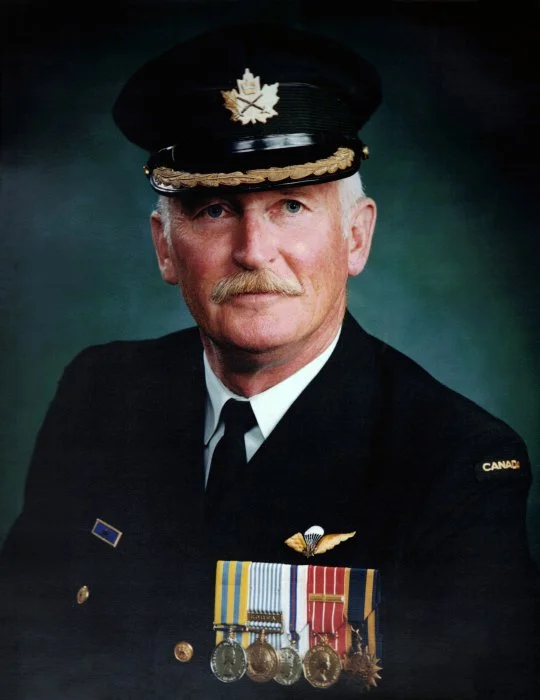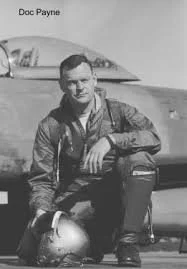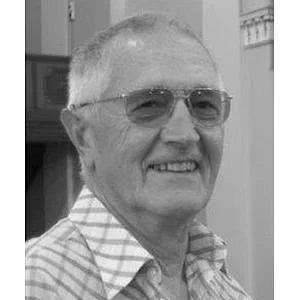Coming Soon……..
Founding Members - 1972
Director - Secretary
Donald Gordon Macleod
(EK4435) – Air Medal (United States) – 2nd Battalion, Princess Patricia’s Canadian Light Infantry – Awarded as per Canada Gazette dated 26 June 1954.
Lieutenant MacLeod distinguished himself by meritorious achievement while participating in aerial flights from 29 May 1951 to 20 August 1951. Serving on temporary duty with the 6147th Tactical Control Group, Fifth Air Force, from the Canadian Army, Lieutenant MacLeod participated in numerous aerial flights in support of United Nations forces to target areas behind enemy lines. Despite the hazards involved, Lieutenant MacLeod flew as observer in an unarmed T-6 type aircraft which penetrated areas of ground activity to locate enemy targets and direct close support aircraft. Through his outstanding airmanship, courage and devotion to duty, Lieutenant MacLeod contributed substantially to the success of United Nations operations in Korea, and reflected great credit upon himself, the Far East Air Forces, and the British Commonwealth forces.
Donald Melvin Payne
(26365) – Air Force Cross – No.426 Squadron – awarded as per AFRO 406/52 and London Gazette dated 5 June 1952 and Canada Gazette dated 7 June 1952. Home in Toronto; enlisted in Hamilton, July 10th, 1942. Trained at No.5 ITS (graduated April 3rd, 1943), No.10 EFTS (graduated July 24th, 1943) and No.1 SFTS (graduated November 12th, 1943). Awarded DFC, July 22nd 1946 for bravery with No.428 Squadron. Instrument flying specialist at Saskatoon, 1955-1958 when he was promoted to Squadron Leader. AFC presented 27 November 1952 by AOC of Transport Command. NOTE: on 28 December 1950, already a veteran of the Korean Airlift, he para- dropped a special package of oxygen equipment needed for a boy with double pneumonia at Lake Harbour, south coast of Baffin Island, 1,100 miles northwest of Goose Bay. The equipment was put aboard at Lachine and packed for the drop at Goose Bay by Corporal R.W. Crebo of Moose Jaw, described as a “crack para-rescue man”; Crebo accompanied the flight and supervised the drop. The drop was so successful that it landed 100 yards from hospital door and was in use within half an hour. Others in crew were F/O G. Waddell of Montreal (co-pilot), F/O R.G. MacNeil of Halifax (Radio Officer), F/O A. Knapper of Ripon, Yorkshire (navigator), LAC J.L.Lanteigne of Moncton (air traffic assistant), Corporal J. Leblanc of Shediac (Flight Engineer) and Sergeant W. Smith of Saskatoon (Flight Engineer). Aircraft had left Dorval on the 27th, overnighted at Goose Bay, and carried on to Frobisher Bay.
Flying Officer Payne served on the Korean Airlift since its inception as a captain of a North Star aircraft, having been attached to the Military Air Transport Service, USAF, as a member of 426 Transport Squadron since the 26th July, 1950. He flew approximately 500 hours over the great circle route through the Aleutian chain to Japan carrying troops and vital supplies. Frequently these flights were flown through hazardous weather conditions which are considered to be the worst in the world. His exceptional ability, resourcefulness and leadership were instrumental in the completion of these missions without mishap.
These qualities were demonstrated forcibly on a flight from Shemya in the Aleutians to Tokyo, Japan on the 2nd October, 1950. When approximately 700 miles southwest of Shemya the number three engine of the aircraft he was flying suddenly went out of control; attempts to feather it proved useless and the only means of reducing the RPM was by decreasing speed. When it became apparent that either the propeller or complete engine assembly might break loose at any moment, Flying Officer Payne sent out a distress signal and prepared his crew for ditching. However, as s result of his outstanding ability, he was able to keep the aircraft airborne without further damage, allowing him to return to Shemya. Had it not been for the superior skill and resourcefulness shown by this officer, a valuable aircraft and crew might have been lost.
His untiring efforts have been a direct contribution to the success of the Royal Canadian Air Force’s phase of this operation.
Otto Vernon Johnson
Vern grew up in Manitoba and joined the army as a trooper at the age of 17 in 1942. He served on the home front as a radio operator in Armoured cars and later transferred to the Air Force in 1943. He certified on aerial and was commissioned in November of 1944 as a Pilot Officer and sent to Pre-Flight School in Saskatoon, Saskatchewan.
After the war Vern worked with the CPR as an Agent Operator (Telegraph). He rejoined the military in March of 1956 as a Lieutenant and served in Search and Rescue in Manitoba and Labrador. He retired as Captain in 1974.
Witman Theodore Swansburg
SWANSBURG, Whitman Theodore, (Ted) (Swanny) February 24, 1930 - August 8, 2017 Ted passed away at Royal Jubilee Hospital with family beside him after a 2 month illness. Son of William Whitman and Mary, he was pre-deceased by his sister Joyce and son Andrew. He is survived by wife Leah, son Bryan, daughters-in-law Theresa and Ines, grandsons Alexander and Edward, brother Russell (Laurel), 3 nephews and their families. Ted was born in Little Harbour, Nova Scotia. As a young man he joined the army, served with LdSH(RC), was a Korean Veteran, then served with RCAPC in Egypt, Canada and Germany. He went on to have a career with the Federal Government. In retirement he enjoyed travel with Leah. A celebration to honour Ted's life will be held on September 11, 2017 at 10:00 am at First Memorial Funeral Services, 4725 Falaise Drive, Victoria, BC.
John Emerson Rees
Jack was born in Cheltenham, England, and experienced the Battle of Britain first hand in his backyard as a 10 year old boy. In 1948 he immigrated to Canada. He joined the RCN in 1949 as an aircraft handler and served aboard HMCS Magnificent until 1950. He remustered into the RCAF as an Aero engine tech, and served in Saskatoon on B-25 Mitchells from 1950-1959. Then in Trenton on DC-4M North Stars from 1959-1967. He finished his career in Edmonton from 1967-1974 with 435 sqd. where he obtained 5000 hours on the C-130E Hercules.
From 1974-1991 he flew B-25J Mitchell water bombers from St. Albert, Alberta in Wood Buffalo National Park. Jack retired from aviation in 1991 and took up his love of gardening.






